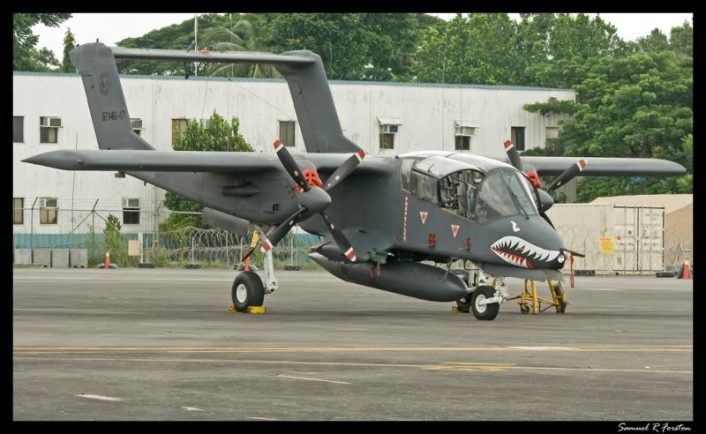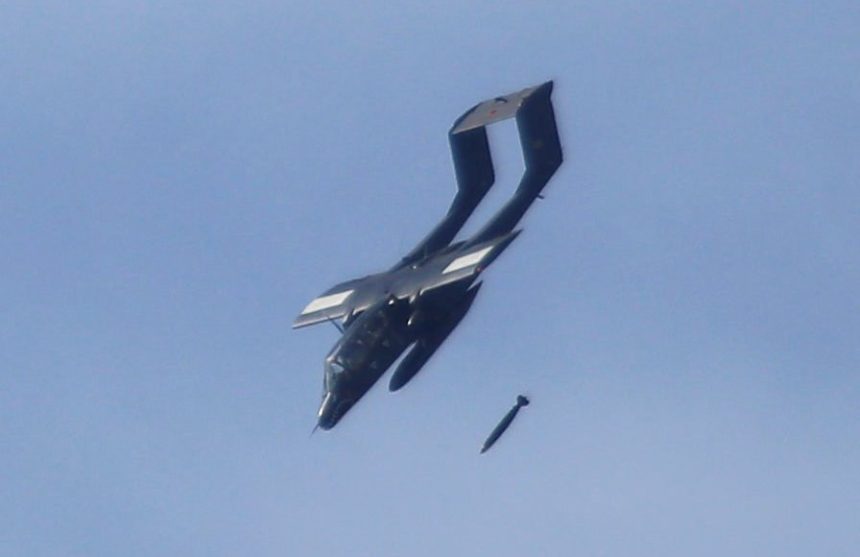Philippine OV-10 Broncos Attack ISIL Targets in Marawi. Two OV-10 aircraft were flown in an experiment supporting Operation Inherent Resolve against ISIL in Iraq and Syria.
The Philippine Air Force has revived the legacy Rockwell OV-10 Bronco light attack aircraft in recent airstrikes on Maute and Abu Sayyaf insurgents associated with ISIL in the city of Marawi in the Philippines.
Beginning with the capture of the central section of Marawi on May 23, Philippine special operations units have fought a difficult house-to-house urban battle to reclaim territory lost to the terrorists. The OV-10 Broncos have supported the operation with mostly unguided bombs, a dangerous mission in close proximity to friendly forces.
The ten remaining OV-10 Broncos in Philippine inventory, including eight upgraded to deliver precision guided weapons, have been used for airstrikes in the densely populated urban area of Marawi in the Philippines. A shortage of guided weapons in Philippine military inventory has caused the aircraft to rely on predominantly unguided weapons.

The North American Rockwell OV-10 Bronco was developed as a forward air control/counter insurgency aircraft during the Vietnam War. It first flew in July of 1965.
In recent U.S./coalition testing the legacy OV-10 Bronco distinguished itself as a highly effective and reliable urban counter-insurgency asset.
Two of the OV-10 aircraft were flown in an experiment supporting Operation Inherent Resolve, the U.S.-led international campaign against ISIL in Iraq and Syria. While the specific locations and objectives of the experimental U.S. OV-10 strikes were not disclosed U.S. Central Command did confirm that the OV-10 Broncos flew 134 sorties, including 120 combat missions, over a span of 82 days beginning in May 2015. Interestingly, a U.S. Navy crew was reported to be flying these strikes.
As of Monday, Jun. 12, 2017 local reports in the Philippines claim that approximately 200 remaining terrorists have been contained to a roughly three-block area in downtown Marawi. Airstrikes by the OV-10’s are centered in that area. There have also been strikes flown by the South Korean built FA-50PH “Fighting Eagle” light jet aircraft.
The United States is providing surveillance and other unspecified support of the operation with a P-3 Orion surveillance and control aircraft. Additionally, U.S. special operations forces have been seen on the ground during the campaign. The U.S. special operations personnel were photographed with control equipment for flying the AeroVironment RQ-20 Puma light surveillance drone. The RQ-20 is a battery-powered, nearly silent hand-launched surveillance drone that carries small cameras with regular and infrared imaging. It can send the live video images back to ground forces for use in targeting and surveillance.

The anti-ISIL campaign in the Philippines continues the discussion about the increased role of light attack aircraft in the Global War on Terror. Many new entries into the light attack turboprop category have been introduced during the last decade including the Embraer A-29 Super Tucano, Beechcraft AT-6 and the agriculture based Air Tractor AT-802U. Proponents of these aircraft argue they are more capable of prosecuting targets with high precision, smaller weapons with less risk of collateral damage and for lower cost than larger jet-powered aircraft programs.
Top image credit: Samuel Forston









